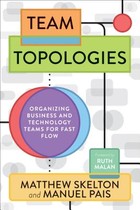The software industry is experiencing another wave of productivity promises, this time powered by AI code generation tools. Companies are investing heavily in these technologies, expecting dramatic improvements in development velocity. However, seasoned developers know a fundamental truth: writing code was never the primary bottleneck in software development.
The Myth of the Typing Bottleneck
Many organizations operate under the misconception that faster code production equals faster software delivery. This thinking echoes historical mistakes, such as paying developers per line of code—a practice that incentivized verbose, inefficient solutions rather than elegant ones.
The reality is that programming is fundamentally about thinking, not typing. Most experienced developers spend far more time staring at their screens, analyzing problems, and designing solutions than they do physically writing code. Even with perfect typing speed, the cognitive overhead of software development remains unchanged.
The True Bottlenecks
Real software development bottlenecks exist in areas that AI code generation cannot address:
Requirements and Communication
Misunderstood requirements lead to building the wrong solution perfectly. No amount of code generation speed can compensate for unclear specifications or poor stakeholder communication.
Testing and Quality Assurance
Comprehensive testing involves multiple phases: unit tests, integration tests, user acceptance testing, and often third-party system integration. These processes require human judgment and domain expertise.
Code Reviews and Knowledge Transfer
Peer review ensures code quality, shares knowledge across teams, and catches potential issues early. This collaborative process cannot be automated away.
Build and Deployment Pipelines
Slow development environments, lengthy build times, and complex deployment processes create significant delays. A developer working with a 3-4 minute restart cycle will optimize for fewer iterations, regardless of code generation speed.
Context Switching and Coordination
Modern development involves constant context switching between projects, handling production issues, attending meetings, and coordinating with multiple teams. These human overhead costs dominate development timelines.
When Code Generation Does Help
There are legitimate scenarios where AI-assisted coding provides value:
Rapid Prototyping
For solo developers or small teams building prototypes to validate ideas, code generation can accelerate the initial exploration phase. The key is understanding that prototypes require significant refactoring before becoming production-ready.
Experimentation and Iteration
When exploring different algorithmic approaches or interface designs, faster code generation can enable more experimentation cycles. However, this works best when combined with fast test feedback loops.
Boilerplate Reduction
Generating repetitive code structures can save time, though modern IDEs and frameworks have already addressed much of this need.
The Productivity Paradox
Many organizations report initial excitement about AI coding tools, followed by gradual disillusionment as the promised productivity gains fail to materialize. This pattern reflects a misunderstanding of software development economics.
The fundamental challenge is that code generation tools excel at producing syntactically correct code but struggle with: - Understanding business context - Making architectural decisions - Ensuring security best practices - Maintaining consistency with existing codebases - Optimizing for long-term maintainability
A Balanced Perspective
This isn't an argument against AI coding tools—it's a call for realistic expectations. These tools work best when:
- Developers maintain oversight: Generated code should be thoroughly reviewed and understood
- Focus on appropriate use cases: Prototyping, boilerplate generation, and exploration rather than production code
- Investment in supporting infrastructure: Fast build times, comprehensive test suites, and efficient review processes
- Recognition of human elements: Communication, coordination, and domain expertise remain critical
Conclusion
The next time someone promises that AI will revolutionize development productivity by generating code faster, remember that software development has always been a human-centric discipline. The real opportunities for improvement lie in better communication, streamlined processes, faster feedback loops, and reduced coordination overhead.
Instead of chasing the latest code generation tool, consider investing in: - Faster development environments and build systems - Better requirements gathering and communication processes - Comprehensive automated testing infrastructure - Team collaboration and knowledge sharing practices
The bottleneck was never the typing—it was everything else. Until we address those fundamental challenges, no amount of AI-generated code will deliver the productivity revolution we're seeking.














